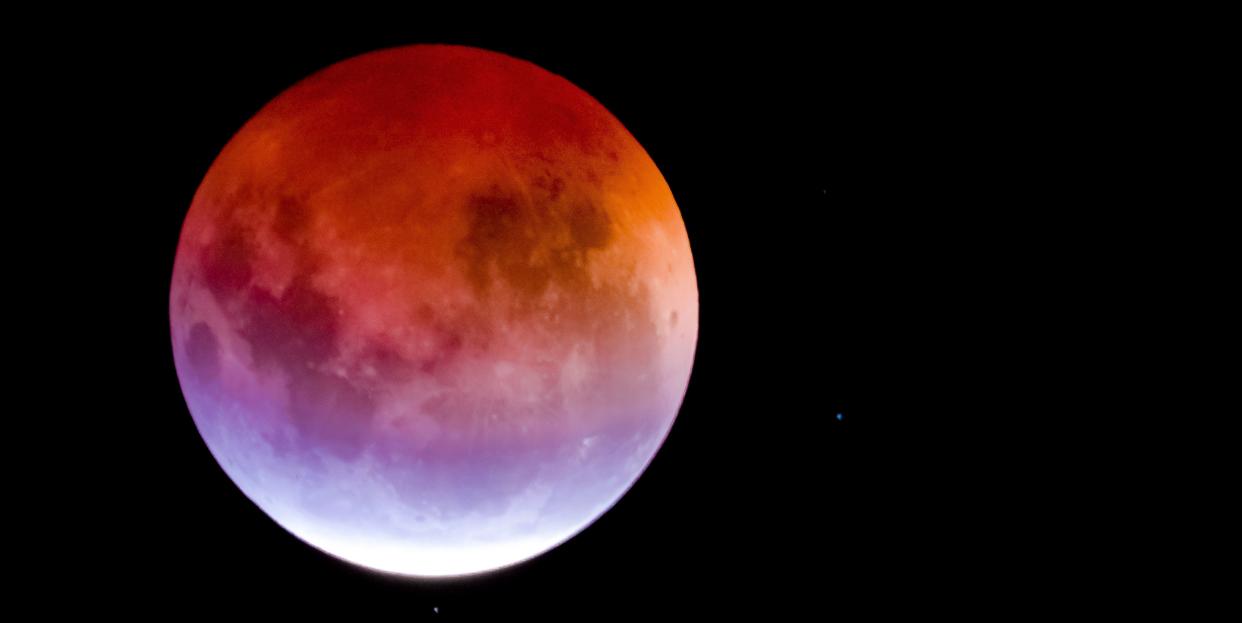July's Blood Moon Will Be The Longest Lunar Eclipse of This Century

There have been some spectacular lunar and solar eclipses over the past few years, and next month brings another show for stargazers to check out.
The next total lunar eclipse will occur on July 27, 2018. A lunar eclipse occurs when the moon passes through Earth’s shadow, at which point it takes on a reddish tint, which is why the eclipse is colloquially called a "blood moon." You won't want to miss this eclipse, as it will be the longest total lunar eclipse of the 21st century, lasting one hour and 43 minutes.
The total eclipse will take place from 7:30 p.m. UTC (3:30 p.m. Eastern) until 9:13 p.m. UTC (5:13 p.m. Eastern). The moon will be partially eclipsed for roughly an hour before and after the total eclipse, and the maximum eclipse will occur at 8:22 p.m. UTC (4:22 p.m. Eastern).
[/twitter]
The eclipse will be completely visible over Eastern Africa and Central Asia, and will be partially seen over Western Africa, Eastern Asia, South America, Europe, and Australia.
As an added bonus, Mars will also appear especially large and bright in the sky that night as it moves toward its closest approach to Earth in 15 years, meaning eclipse watchers may be able to catch a great view of the red planet alongside the blood moon.
Stargazers in North America and the Arctic will not be able to view the blood moon in the sky, but there will be plenty of coverage online. The Virtual Telescope Project will start a livestream at 6:30 p.m. UTC (2:30 p.m. Eastern) and timeanddate.com will begin streaming at 6:00 p.m. UTC (2:00 p.m. Eastern).
The next total lunar eclipse that will be viewable from the United States is just seven months away, coming on January 20, 2019.
You Might Also Like